Coffee is a popular beverage all over the world. Millions of people brew coffee in their homes or buy it from coffee shops every day.
It is also one of the most traded commodities in the world. Some economists say it is the second most traded item in the world.
That may sound crazy, but it’s understandable if you consider that over 2 billion cups of coffee are consumed in the world every day.
Why is coffee in such high demand? It is an addictive beverage. Many of us drink up to four cups of coffee a day.
While you may only care about the flavor and aroma of the coffee you brew every morning, it’s good to note that it goes through a lengthy and complex process to get to you.
Here is some information on coffee distribution that you may find interesting.
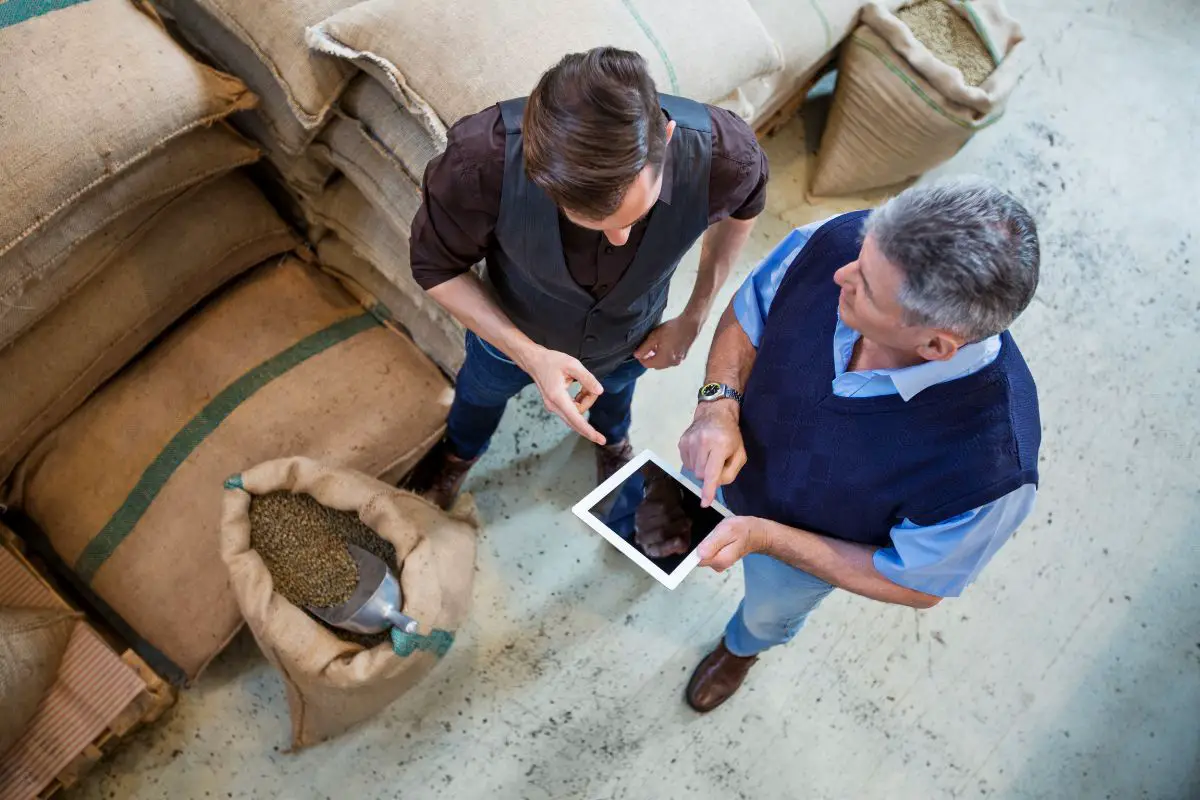
Where do Coffee Beans Come From?
To understand the coffee distribution, we have to look at where coffee beans come from in the first place.
Coffee beans are seeds extracted from coffee cherries that grow on coffee plants.These plants grow in warm, humid areas in Asia, Africa, and South America.
Examples of excellent coffee-growing countries are Ethiopia, Kenya, Colombia, Vietnam, and Indonesia.
The major varieties of coffee plants grown all over the world are Coffea Arabica , Coffea Canephora, Coffea Liberica, and Coffea Excelsa.
Coffea Arabica and Coffea Canephora are the most preferred coffee varieties. These plants grow to a height of 3 – 6 feet tall and produce the Arabica and Robusta coffee beans we use to brew our coffee.
Some of the coffee practices that guarantee great-tasting coffee are shade coffee growing and single-origin coffee production.
Coffee beans get from farm to cup through the following processes.
1. Harvesting
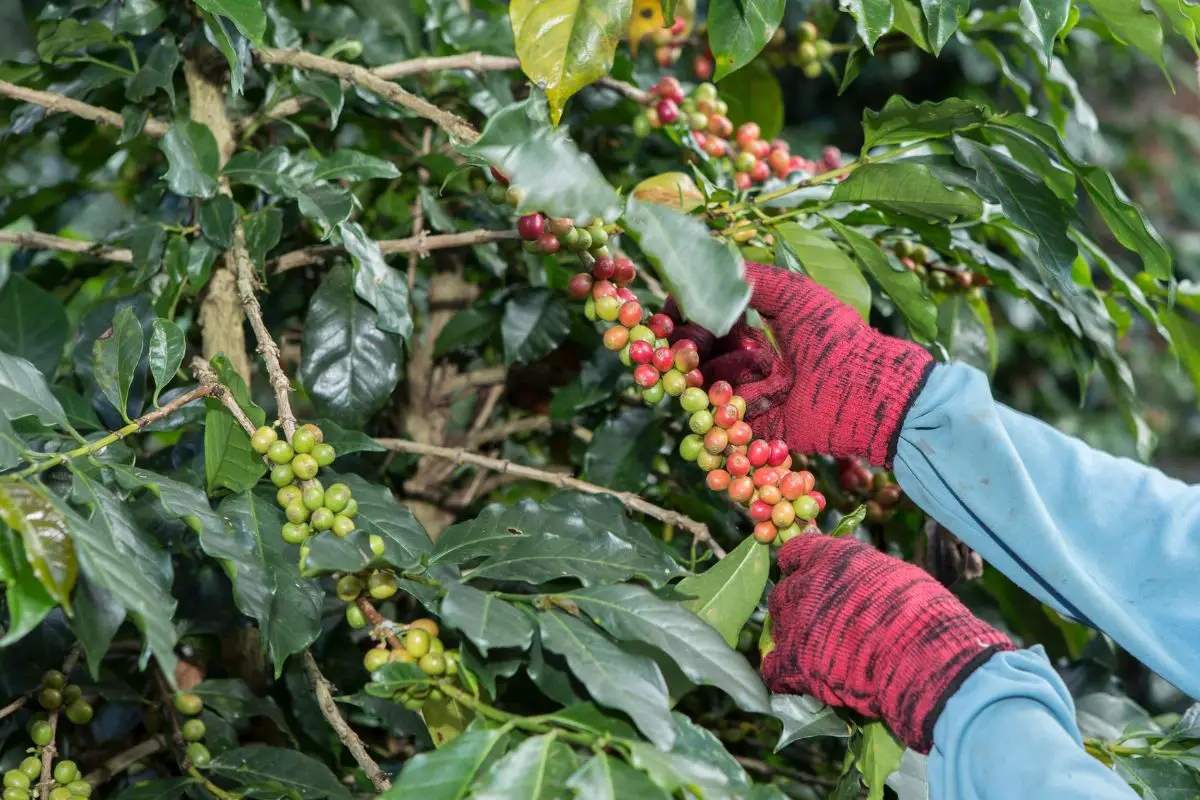
The first point of coffee production involves coffee harvesting. It takes 3 -4 years for coffee plants to produce mature coffee cherries. These cherries are harvested when they are red, yellow, or orange in color.
In most coffee-growing countries, coffee cherries are harvested once a year. Although coffee is usually harvested by hand, some large-scale coffee farms use mechanized harvesting.
It is generally accepted that hand harvesting, although labor intensive, is better.
Two processes are used to harvest coffee through hand picking. These are strip picking and selective picking.
During strip picking, coffee cherries are stripped off the coffee plant. That occurs when about 75 percent of the cherries are ripe.
Selective picking is more thorough. Harvesters only hand-pick the ripe coffee cherries from the coffee plant.
While selective picking lengthens the harvesting period, it produces a better-quality harvest. This process is often used when harvesting Arabica coffee beans which are considered of higher quality than Robusta coffee beans.
2. Hulling
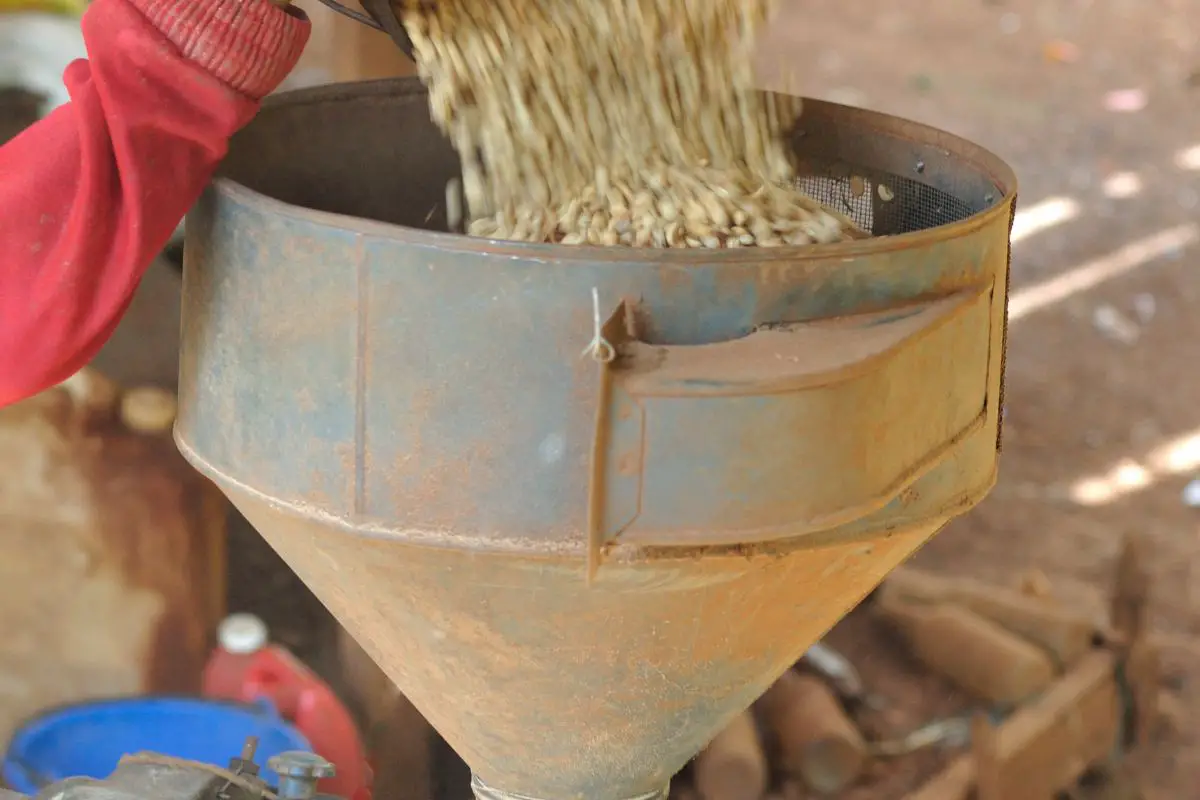
Once the harvesting process is complete, coffee cherries are taken to the processing plant. That’s where the coffee beans are extracted from cherries through hulling.
Several methods are used to hull coffee. These are the dry (natural), wet, and honey processing methods.
The dry or natural method of processing coffee cherries involves spreading the cherries out in the sun to dry. Once their moisture content gets to 11 percent, the dry coffee cherries are milled to peel off the dry skin around the coffee beans which are then packed in bags.
The wet method of processing coffee, also called wet hulling, starts with the removal of most of the skin and pulp surrounding the coffee seed. Any pulp that remains is removed after a fermentation process that takes 2 or 3 days. These seeds are then washed, dried, and packaged.
There is also the honey process that involves drying the coffee beans out in the sun after their skin has been peeled off. The coffee cherries are then left out in the sun for days to give the mucilageous layer around them time to ferment. That creates a layer called honey that enhances the flavor of coffee beans.
Once the coffee beans are hulled, they are taken to the mill for grading.
3. Coffee Milling and Grading
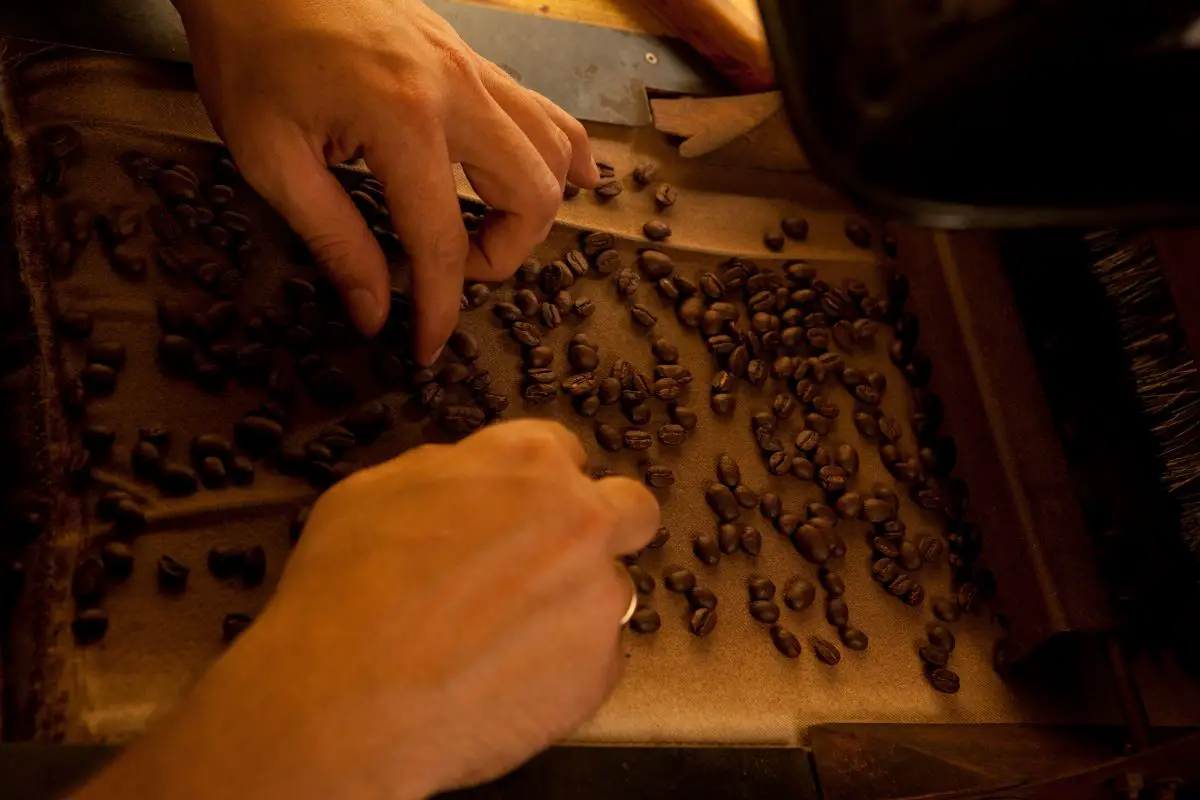
Dried coffee beans are sorted by grading them. During coffee grading, samples of green coffee beans are checked for defects and packed according to their size and level of perfection.
Grade 1 coffee beans have few defects, which is why they are used to make specialty coffee beans. Grade 2 coffee beans have at most 8 defects and are used to make premium-grade coffee beans.
Grade 3 coffee beans have between 9 – 23 defects and are used to make Exchange grade coffee beans such as those you find in grocery stores.
Grade 4 coffee beans have between 24 – 86 defects and are what you get from standard coffee beans. They are generally referred to as the lowest-grade coffee beans you can find.
Milling coffee beans is usually done by cooperatives who also market the coffee for farmers and earn a commission from it.
Farmers who grade their own coffee, have to find coffee buyers by themselves or sell them through private auction. It is a complex process, but they get all the profits.
4. Exporting coffee

Graded coffee beans are usually sold to coffee exporters and importers. These beans are shipped in bulk to these people.
About 150 million bags of coffee are produced and exported all over the world in a year. Espresso and Arabica coffee beans make the bulk of coffee bought by coffee exporters and importers.
These coffee beans are then sold to roasteries through coffee auctions. Some cooperatives and private coffee producers also sell their coffee direct to middlemen who then sell it to roasteries.
5. Roasting coffee beans
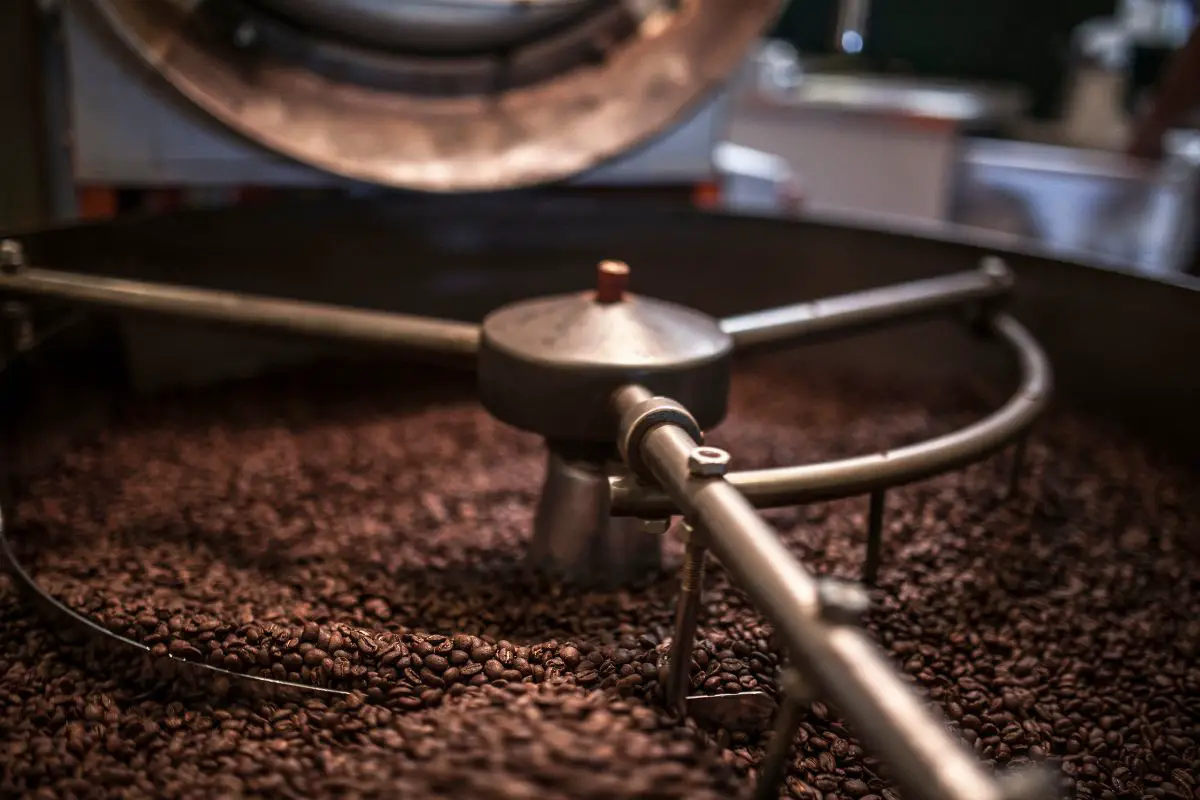
Roasteries are responsible for roasting green coffee to the light, medium, and dark roasts you see in packaged coffee.
There are also coffee chains and large restaurants that prefer to buy green coffee beans from intermediaries such as auction houses and roast them to their preference.
That’s where you get coffee beans such as hand-roasted coffee beans and reserve coffee beans. Some roasteries also produce flavored coffee beans, such as orange coffee and blueberry coffee during roasting.
Roasting coffee beans determines how your coffee beans taste and smell. The flavor goes from light and fruity to earthy, nutty, and chocolatey the more the coffee beans are roasted.
While some roasteries sell whole coffee beans, others prefer to grind these beans to various grind sizes before packaging. That’s where you get the coarse, medium, and fine coffee grounds you buy from grocery stores.
Packaged roasted coffee beans and coffee grounds are sold online, in grocery stores, and coffee shops. Some roasteries also sell roasted coffee beans directly from their establishments.
Conclusion
That’s some information on coffee distribution. Coffee is an essential part of dining experiences all over the world. People like to take it at breakfast, after a meal, or even as a dessert.
It is packed with antioxidants that prevent illness and aging. Many people also rely on coffee to improve their mood and mental clarity.
For these reasons, coffee distribution is a critical process in the food industry because coffee is an integral part of our lives.
If you are one of the people that love coffee, you now know where your favorite bag of coffee beans comes from. You can see that coffee goes through a lengthy process before it gets to us. It is a precious commodity.
So the next time you buy a cup of coffee or brew some at home, you’ll be sure to appreciate just how far it’s come.
Read related article:
The Global Popularity of Coffee and Its Impact on International Trade